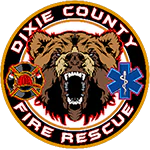
Discuss the types of hazards that could affect your family, then create and rehearse an emergency plan for either sheltering at home or evacuating, if that becomes necessary.
Know your home's vulnerability to storm surge, flooding, and wind. Front doors and garage doors are the most susceptible to wind. If wind enters a home, the roof can be torn off. Locate a safe room or the safest areas in your home for each hurricane hazard. In certain circumstances, the safest areas may not be your home, but somewhere else in your community.
Determine escape routes and a place to meet. The location should be no farther than 10 or 15 miles. Post emergency telephone numbers by your phones and make sure your children know when & how to call 911.
Even with tie-down straps, mobile homes can only withstand minimal hurricane winds. Plan to evacuate.
Check your insurance policy. Make sure you have enough coverage for your home and personal property.
Meet with your family and discuss why you need to prepare for a disaster. Explain the dangers of fire, severe weather, and earthquakes to children. Plan to share responsibilities and work together as a team. Discuss the types of disasters that are most likely to happen. Explain what to do in each case.
Pick two places to meet: Right outside your home in case of a sudden emergency, like a fire.
Outside your neighborhood, in case you can't return home. Everyone must know the address and phone number.
Ask an out-of-state friend to be your "family contact." After a disaster, it's often easier to call long distance. Other family members should call this person and tell them where they are. Everyone must know your contact's phone number.
Discuss what to do in an evacuation.
Create your plan at www.floridadisaster.org/family

Remain indoors in a safe place - do not go outside.
If the eye passes over, it may seem like the storm is gone, but it is not.
If you lose power, listen to a battery-operated radio with local news and updates on the storm.
Remember, law enforcement and other emergency workers will not respond to calls for service after the winds exceed 45 mph. The danger to rescue personnel is too great.

Be careful around your home. Watch out for downed power lines, debris, and other hazards caused by winds and flooding.
Be patient. It could take up to 24 hours for county distribution sites to open, or even longer after a catastrophic hurricane. Don't expect the government to deliver supplies - be stocked and ready to support yourself for at least 3 to 5 days.
If you are at a shelter or evacuated out of the area, you will not be allowed back in until authorities determine that conditions are safe enough for the public to return. To expedite getting back to your home, obtain a free disaster re-entry tag prior to evacuating.
Use flashlights -- do not light matches or turn on electrical switches, if you suspect damage.
Sniff for gas leaks, starting at the water heater. If you smell gas or suspect a leak, turn off the main gas valve, open windows, and get everyone outside quickly.
Shut off any other damaged utilities. (You will need a professional to turn gas back on.)
Clean up spilled medicines, bleaches, gasoline, and other flammable liquids immediately.
